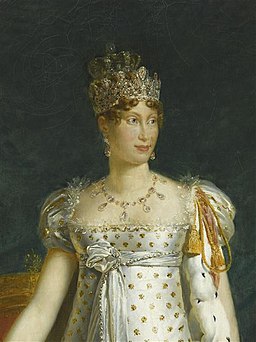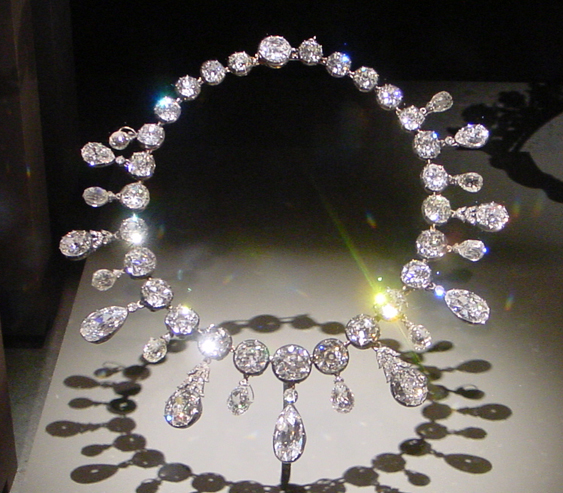It very likely ranks as history’s most extravagant push present. The now famous Napoleon Diamond Necklace is an exquisitely crafted treasure whose story spans over 200 years and includes some interesting twists and turns on its journey to its permanent home in the Smithsonian Museum of Natural History.

What is the Napoleon Diamond Necklace?
Commissioned by Napoleon in 1811, it was a gift for his second wife Marie-Louise on the occasion of the birth of their son, Napoleon II. Designed by Parisian jeweler Marie-Etienne Nitot, it was not the first piece Nitot had created for the emperor. He was also responsible for the designs of Napoleon’s coronation crown, his papal tiara, the Marie-Louise diadem gifted to his wife upon their marriage, and the wedding jewelry for his first wife, Josephine. In the days before African-sourced diamonds, the gem was considered extremely rare and accessible only to the richest of the rich. This signifies just how extraordinary this necklace was in both its abundance of stones and expense.
The Napoleon Diamond Necklace Facts
The total weight of the diamonds is estimated at an eye-watering 263 carats with the largest single diamond estimated at 10 carats. Only estimates are given as to have diamonds professionally weighed and graded would require removing them from their settings.
The design is rather simple, free of any flourishes, scrollwork, or detailed motifs. It features a total of 234 diamonds, likely mined in Brazil or India as these countries where the only places that consistently sourced diamonds during this era. There are twenty-eight mine-cut diamonds, an antique forerunner to today’s brilliant cut characterized by its large cutlet, a higher crown, and shorter lower half facets. From the central thread there is a fringe of nine pendeloques and ten briolettes. Five of the pendeloque is set under a brilliant cut stone; the other four are attached to delicate motifs of 23 small diamonds each. Every briolette is set with a dozen rose-cut diamonds.
A recent infrared spectroscopic analysis revealed that most of the diamonds are primarily colorless Type Ia (95% of natural diamonds are Type Ia).
The History of the Napoleon Diamond Necklace
Marie-Louise worn the necklace the rest of her life, including for a number of portrait sittings. Upon her death, the necklace was passed among her various Habsburg relatives. In 1929, Maria Theresa of Portugal decided to sell the necklace due to dwindling family wealth. When her efforts failed, she found to people who presented themselves as an Italian Princess and member of the British Secret Service. Somehow they managed to convince Maria-Theresa’s grandnephew to intervene on their behalf and allow them to sell the necklace. When they found a buyer Maria Theresa saw received only $7000 of a promised $450,000. She successfully got the necklace returned and legal proceedings against the conspirators followed, along with headlines detailing the scammers’ ploy. Only her grandnephew was sent to jail. His cohorts, managed to disappear and avoid prosecution.
The next few decades were less dramatic for the necklace as it changed hands several times, for a short time being owned by Harry Winston. In 1962 Marjorie Merriweather Post donated the Napoleon Diamond Necklace to the Smithsonian and since then has been on display for public to enjoy at the Natural Museum of History along with Marie-Louise’s Tiara.
There is a fascinating in-depth study of this necklace at the GIA website.
Photo credit: copyright annemoss.com 2008, CC BY-SA 3.0 https://creativecommons.org/licenses/by-sa/3.0, via Wikimedia Commons

